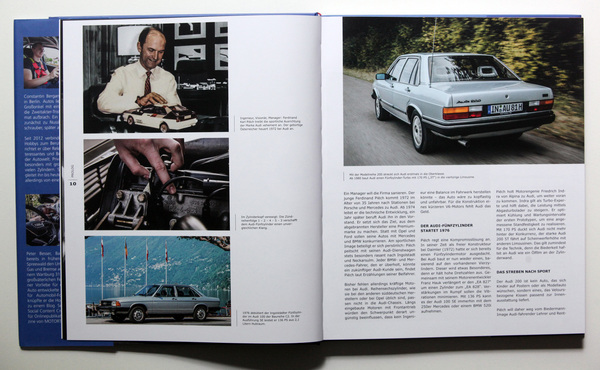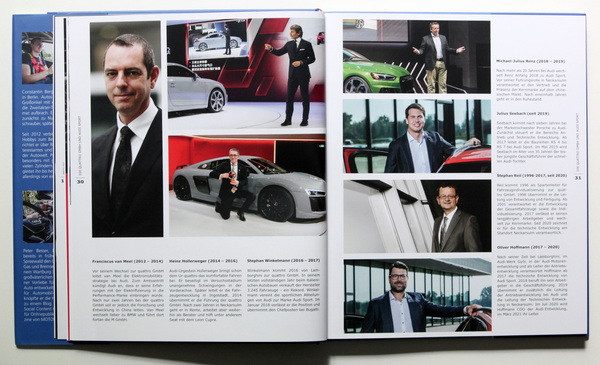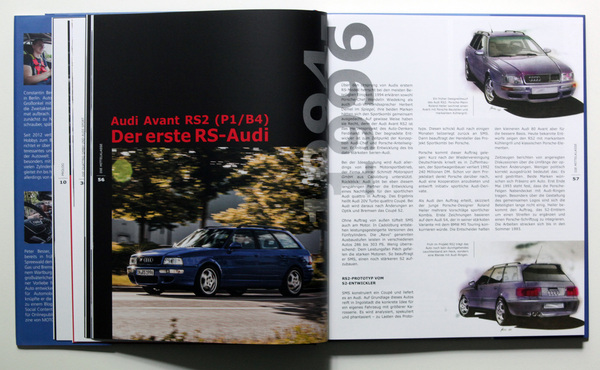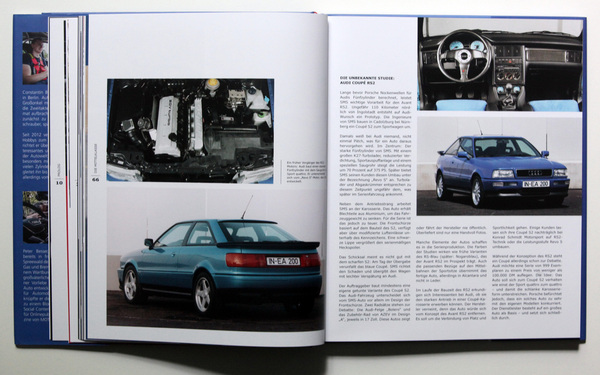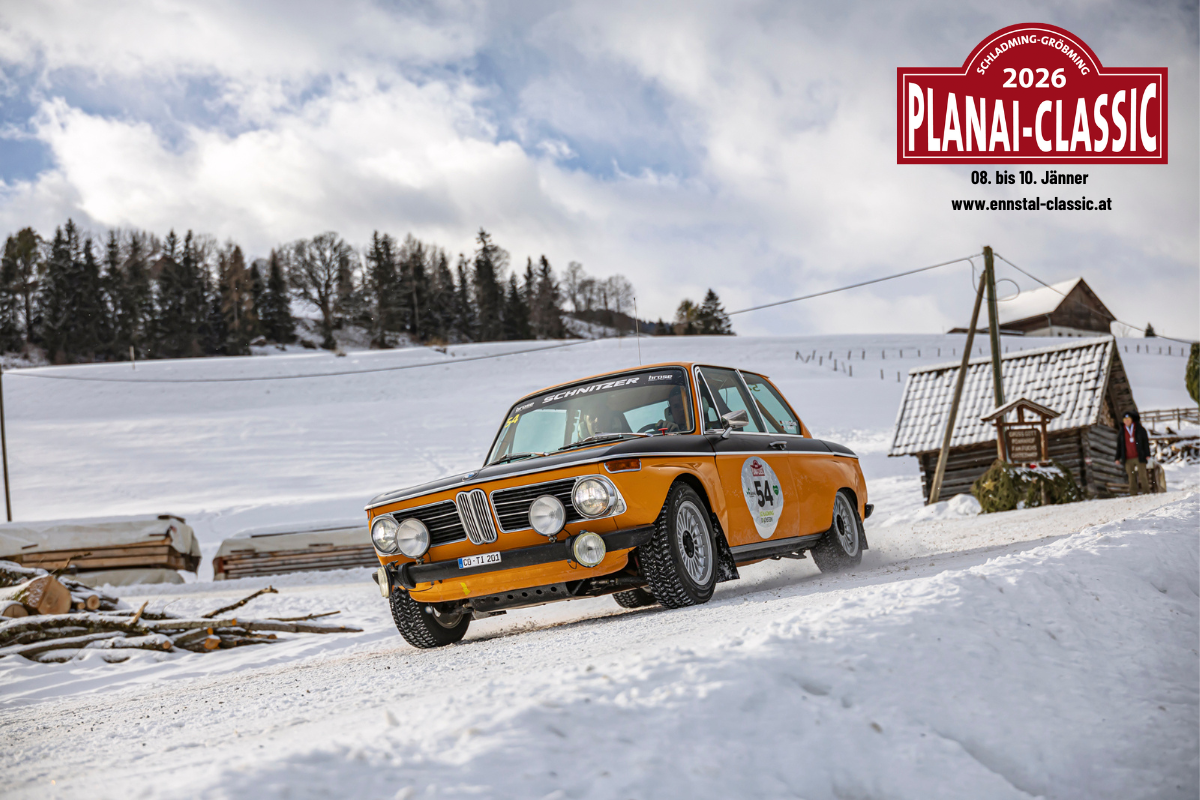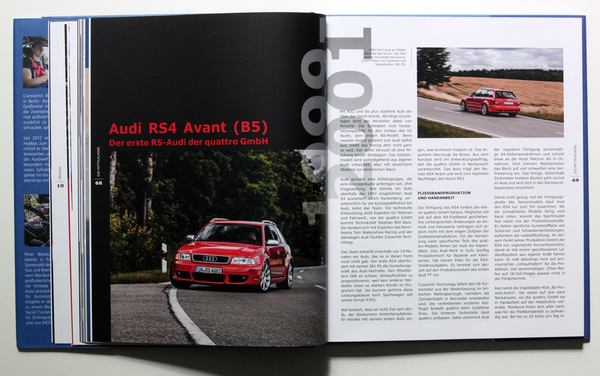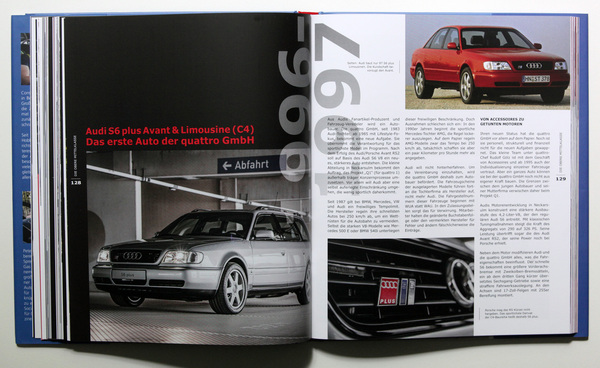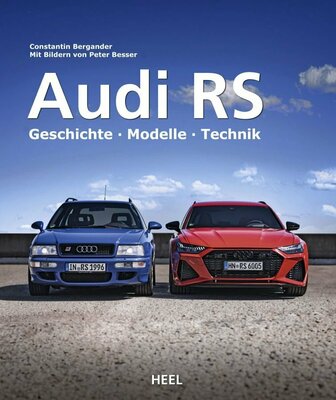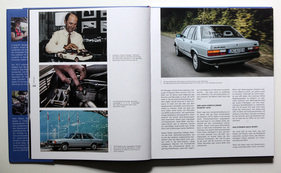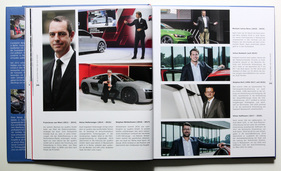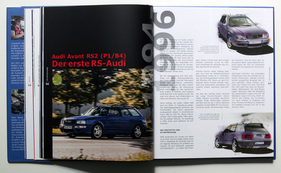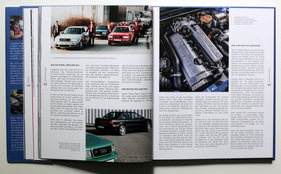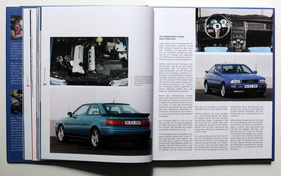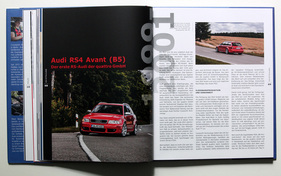Sophisticated technology, ideally combined with extraordinary performance from high-end engines, is what makes desirable small series models. Price and sophistication ensure small-scale distribution and are the best recipe for breeding classic pearls. Audi initially relied on the Porsche kitchen to turn an inconspicuous Audi 80 Avant into a high-performance classic.
When the Audi Avant RS 2 came into the world somewhat surprisingly in 1994, the press had a bit of trouble categorizing the small Ingolstadt station wagon correctly. Performance at Porsche Turbo level paired with load volume, and all from Audi. And at a price of DM 100,000? Who would do anything with that?
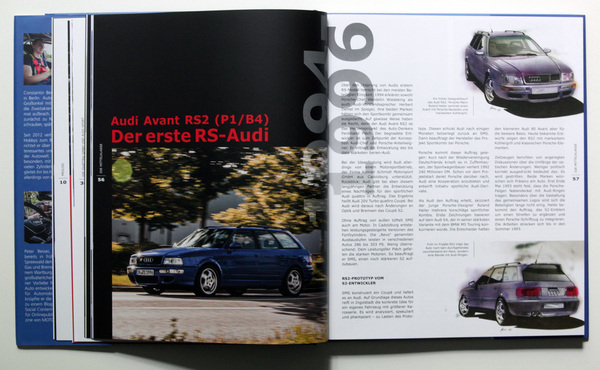
Almost 30 years later, we are smarter. So it's all the better that Constantin Bergander has now written an extremely readable book about the history of the RS, from which everyone can choose their own classic pearl right up to the present day.
Find classic pearls
In view of the extravagant and powerful design of the RS models, you have to ask yourself whether you should opt for a used RS model from Audi for the price of a moderately powered Polo or Golf. Although auto-motor-und-sport editor Gert Hack had his fair share of difficulty in integrating the balancing act between proximity to Porsche and rejection of Audi into his limited presentation of the RS2, this did not detract from the success of the Avant RS 2. Almost 3000 vehicles of the small estate were produced. More than anyone in Ingolstadt had dreamed of. This laid the foundation for a solid model range, which was one of the spearheads of Ingolstadt's highly committed carmakers at the time.
Anyone looking for the right model will find the right chronicle in Bergander's book to find the right model for them. After all, the once manageable range of just one model per model year has now given way to a broad flood of models. Between classic 5-cylinder power and V10 power supply, the book can take you off course. It's good that the roadbook for the RS models can provide clarity here, even for seasoned Audi connoisseurs like the author of this review. So that instead of a new Polo, you end up with a classic pearl in your garage.
Qualities of a book
Anyone expecting the RS2 at the beginning of the book will be disabused. The author breaks with the expected chronology. He works through the chronology of the RS model series from bottom to top. And once the reader dives into the book, at the latest, it becomes clear: It makes sense. Because the author's highly technical approach can be illustrated in his evolution within a model series. This is not just about history, it is about technology in detail at a very high level.
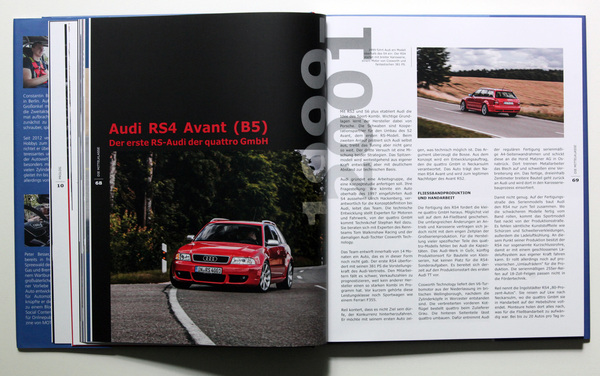
The reader is always up to speed in the evolution within a model series. What distinguishes individual RS models in terms of technology and design, how they have developed further, full throttle. A fine move that could never have been so clear-cut if a chronological approach had been taken due to the model policy of quattro GmbH, which has been responsible for the RS models since 1996.
The important Audi 200
From a contemporary point of view, the RS models were not born in Audi's cradle. The up-and-coming brand was still in the process of discovery in the 1990s, while dedicated drivers had already discovered the Eldorado of performance in the Audi 200 20 V quattro and were prepared to forgo the star or kidney grille. Consequently, the author begins with the meteoric rise of the brand at the beginning of the 1980s. Two technical factors determined the opportunities... turbo technology and quattro all-wheel drive, paired with the now legendary Audi five-cylinder engine. This gave rise to the Audi 200 5T and the Audi quattro in 1979/80. Even if Bergander is a little too nostalgic about the success of the 200 with its overly plush interior atmosphere, it should not be forgotten that the car was a great sales success and sold worldwide at the same level as the six-cylinder Mercedes W123 during its production period.
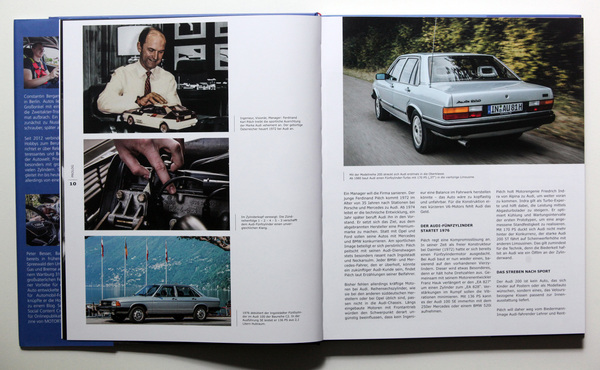
While the original quattro never achieved record sales, it developed into an image transformer par excellence for Audi thanks to its rally victories. Prestige through sporting success: Ferdinand Piëch built on familiar Porsche traditions to make the brand attractive for himself (and customers). An almost incomparable success story began here.
Full of content
Bergander really takes on all RS models and their derivatives such as the S6 Plus, the first independent model from quattro GmbH. Model history, model evolution, equipment, presentation events. Wherever there seems to be a background story, you can read it here. The author not only impresses with his readable style, but also with the detailed description of the technology of each individual model. It's really delicious to read. Especially because the background to the individual model developments is described in wonderful detail. The author has carried out extensive research throughout the entire book. And it pays off on every page.
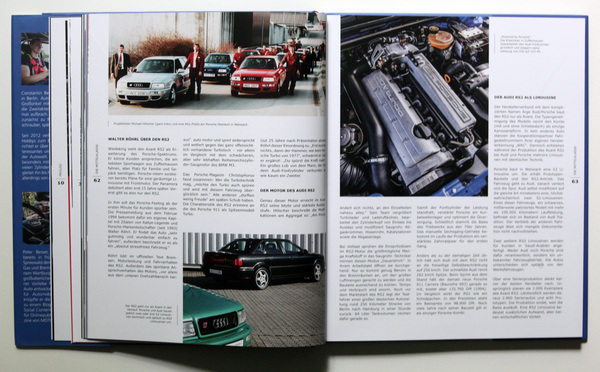
The background story of the development of the first RS2, which was initially planned as an RS4 based on the Audi 100 (C4) at Porsche, is particularly exciting. And how both manufacturers struggled to be recognized for their achievements on this model. This brings to light a very fine history of Audi and Porsche in detail, which was previously only known internally. The section, which is well worth reading, is rounded off by perfectly staged photographs of selected vehicles provided by Audi Tradition. All in all, not only pure press photos, but also some archive material.
Worth reading
There is no doubt that this book deserves the highest praise. It finally delves into the exciting RS model history of Audi and finally closes this gap in Audi literature. The book inspires with a consistently light yet absolutely substantial writing style with remarkable depth on each model. It is also equipped with remarkably appealing photography, in which even the captions are worth every word.
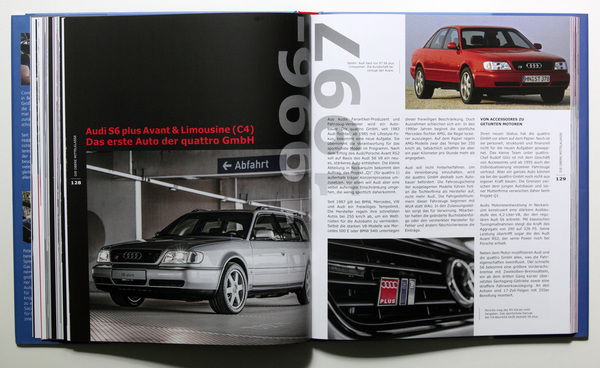
Rarely have we had such a self-contained book to review. This book is far too good for the bookshelf. It may end up there once you have found your classic pearl... but it also makes it quite difficult to find the right model.
For EUR 49.95, Christian Bergander has really brought an inspiring book onto the market here, which makes it easy for us to recommend buying it. Probably also because it will soon be a sought-after rarity itself. In any case, I have two copies on my shelf.
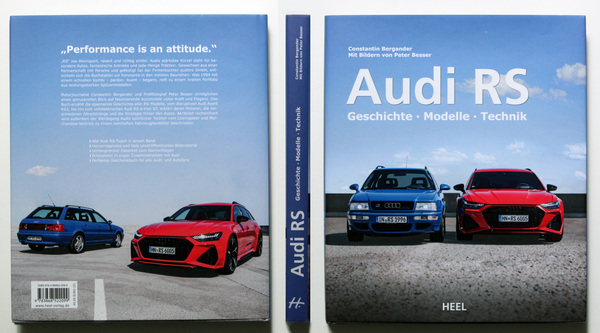
Bibliographical details
- Title: Audi RS - The High-Performance Models
- Author: Constatin Bergander
- Language: German
- Publisher: Heel-Verlag
- Edition: 1st edition March 2021
- Format: 245 x 290 x 25 mm, hardcover with dust jacket
- Scope: 260 pages, numerous photos, tables and illustrations
- ISBN: 978-3-868-52209-9
- Price: EUR 49.95
- Buy/order: Online at amazon.de, online at Heel-Verlag or in a good bookstore

